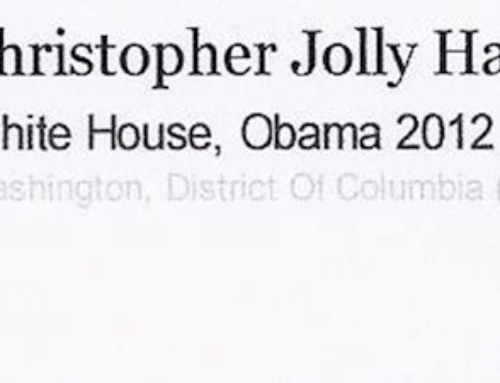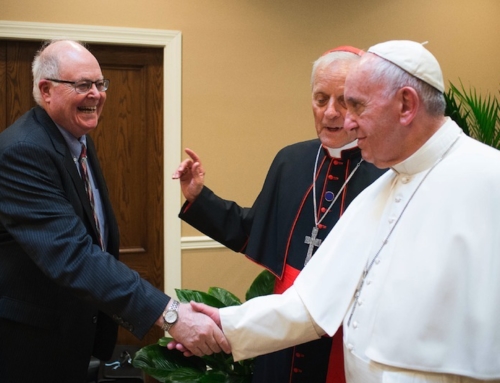by Sister Margherita Marchione, Ph.D.
(Catalyst 10/2006)
Sister Margherita Marchione is the author of several books on Pope Pius XII, the latest being Crusade of Charity: Pius XII And POW’s 1939-1945.
Below the portrait of Pope Pius XII in the Israeli Holocaust Memorial, Yad Vashem, there is a statement which is contrary to the truth and is unjust. It must be repudiated. I contacted the director of Yad Vashem and asked him to consider the efforts of the Pope who helped save hundreds of thousands of Jews and other victims of the Nazis. But will Yad Vashem at least correct the errors beneath his photo?
The statement includes:
“Pius XII’s reaction toward the killing of Jews during the period of the Holocaust is controversial. In 1933, as the Vatican Secretary of State, in order to maintain the rights of the Church in Germany, he signed a Concordat with the Nazi regime even at the price of recognizing the racist Nazi regime. When he was elected Pope in 1939, he put aside an encyclical against racism and anti-Semitism prepared by his predecessor.”
● Pius XII wrote his own encyclical, “Summi Pontificatus,” which did deal with racism.
“Although reports about the assassination of Jews reached the Vatican, the Pope did not protest either by speaking out or in writing.”
● This is not true. Whenever Pius XII spoke out, there was immediate retaliation by the Nazis. There were more than 60 protests!
“In December of 1942, he did not participate in the condemnation by members of the Allies regarding the killing of Jews. Even when the Jews were being deported from Rome to Auschwitz, the Pope did not intervene.”
● The Pope did indeed intervene. After that first day, the SS were ordered to stop the deportation of the Jews in Rome.
“He maintained a neutral position except toward the end of the war when he appealed on behalf of the government of Hungary and of Slovakia. His silence and the absence of directives obliged the clergy in Europe to decide independently how they should behave toward the persecuted Jews.”
● This is not true. Members of the Church were ordered to protect all refugees and Jews.
Pius XII’s sanctity has been recorded. There are many volumes of depositions for his beatification. He was a humble person who did not want his accomplishments and many good works revealed. Respecting his wishes, Sister Pascalina Lehnert—his housekeeper—implemented the Pope’s charitable works and served him faithfully from 1923-1958.
In her deposition, Sister Pascalina clearly stated that Pius XII did not issue a formal condemnation of Nazism because the German and Austrian bishops feared increased retaliation and dissuaded him from making additional protests that would undoubtedly irritate Hitler. And there was retaliation. During the persecution against Catholics, the Nazis not only destroyed churches and closed schools, but also arrested priests and Catholic leaders who were sent to concentration camps. All the protests of the Holy See were reported in a volume published in Germany in 1965.
Michael Tagliacozzo, a Jewish historian responsible for Beth Lohame Haghettaot Center in Italy, praised Pope Pius XII’s wartime efforts. He recently provided the following information from Hashavua, the magazine of “Beth Alpha”:
● Maurizio Zarfati, a resident in Acco, Hativath Golani St., wrote December 7, 1994, that he was saved with his parents, brother and sister in the monastery of the Augustinian Oblates of Santa Maria dei Sette Dolori in via Garibaldi. To permit men to enter, the Holy Father exempted them from rules of cloister. The Sisters gave up their rooms and moved to restricted quarters. … There were 103 Jews in that convent.
● Soldier Eliyahu Lubisky, a member of the “Kibuz Beth Alpha,” wrote on August 4, 1944, in the weekly Hashavua, that “he found more than 10,000 Jews in Rome. The refugees praised the Vatican for their help. Priests endangered their lives to save the Jews.”
In general, while begging for help, the Jews who were in contact with Pope Pius XII insisted that he avoid any public action. Sister Pascalina wrote: “The Pope not only opened the doors of the Vatican to protect the persecuted, but he encouraged convents and monasteries to offer hospitality. The Vatican provided provisions for these people. He ordered me to spend his inheritance and personal funds to provide for those who wished to leave Italy and go to Canada, Brazil, or elsewhere. Note that $800 was needed for each person who emigrated. Many times the Pope would ask me to deliver to Jewish families a sealed envelope containing $1,000 or more.”
In 1944, the Chief Rabbi of Rome, Israel Anton Zolli, gave an interview to the American Hebrew (July 14, 1944). Rabbi Zolli, who had been hidden in the Vatican during the German occupation of Rome, told the paper, “The Vatican has always helped the Jews and the Jews are very grateful for the charitable work of the Vatican, all done without distinction of race.”
In his book Antisemitismo, Rabbi Zolli would later write: “World Jewry owes a great debt of gratitude to Pius XII for his repeated and pressing appeals for justice on behalf of the Jews and, when these did not prevail, for his strong protests against evil laws and procedures…. No hero in all of history was more militant, more fought against, none more heroic than Pius XII in pursuing the work of true charity!… and this on behalf of all the suffering children of God.”
It is well known that Zolli converted to Catholicism after the war, taking as his baptismal name the pope’s, Eugenio. As Zolli would write in his memoirs: “The Holy Father sent by hand a letter to the bishops instructing them to lift the enclosure from convents and monasteries, so that they could become refuges for the Jews. I know of a convent where the Sisters slept in the basement, giving up their beds to Jewish refugees.”
Pope Pius XII made abundantly clear his judgment of the German aggression. In its front-page caption, the New York Times announced: “Pope Condemns Dictators, Treaty Violators, Racism; Urges Restoring of Poland.” The paper printed the entire text of Pius XII’s encyclical, Summi Pontificatus, on pages 8 and 9. It was a powerful attack on totalitarianism and racism. Pius XII condemned racism not only by publicly defending his Jewish brethren and explicitly using the word “Jew,” but did so by quoting Saint Paul (Col. 3:10-11).
During his first year as pope, he created a special department for Jews in the German section of the Vatican Information Office. According to the Canadian Jewish Chronicleand other Jewish publications, some 36,877 papers were processed on behalf of Jewish refugees. In view of the plight of the Jewish people of Europe, resolutions were adopted at the January 1939 meeting of the Jewish Congress in Geneva. Dr. Nahum Goldmann, chairman, stated: “We record the Jewish people’s deep appreciation of the stand taken by the Vatican against the advance of resurgent paganism which challenges all traditional values of religion as well as inalienable human rights upon which alone enduring civilization can be found.”
Pius did more than protest. He immediately issued directives to all convents and monasteries to open their doors to protect Jews and other refugees. Some 80 percent of Italian Jews would survive the war, a much higher percentage than in many other nations. Refugees, mostly women and children, were even housed in the papal apartments at Castelgandolfo, where 28 children were born during the spring of 1944. Over 12,000 people found refuge in this papal villa. Day and night, Vatican trucks bearing the yellow and white flag brought food and other necessities to Castelgandolfo. After the war, as an expression of their gratitude, these refugees placed a memorial tablet “To Pope Pius XII, the Angelic Shepherd…” in the tower of the papal palace.
Tibor Baransky, a board member of the U.S. Holocaust Memorial Council and a Yad Vashem honoree, recalls that “Papal Nuncios helped the Jews. They got the orders straight from the Pope.” He recounted that, while working at the age of 22 as a special representative of Angelo Rotta, the papal nuncio in Hungary, he heard from Jewish leaders who asked the pope not to raise a public outcry over the Nazi atrocities—since it would likely only increase their ferocity. (The Nazis had solidified their power in the early 1930s, and ferocious retaliation had been the typical response to every other Vatican protest.)
Working with Rotta—Pius XII’s personal emissary in Hungary—Baransky carried blank documents, forged protective passes, and faked baptismal certificates to save as many Jewish lives as possible; when Nazis and their local sympathizers ignored these documents, Rotta sent Baransky to retrieve them.
In July 1944, the American Jewish Committee and other Jewish organizations organized a rally in Manhattan, New York, to protest the deportation of Hungarian Jews. In his discourse, Judge Joseph Proskauer, president of the American Jewish Committee, said: “We have seen how great was the work of the Holy Father in saving the Jews in Italy. We also learned from various sources that this great Pope has tried to help and save the lives of Jews in Hungary.”
The anti-papal polemics of ex-seminarians like Garry Wills [Papal Sin], and John Cornwell [Hitler’s Pope], of ex-priests like James Carroll [Constantine’s Sword], and other lapsed or angry liberal Catholics exploit the tragedy of the Jewish people during the Holocaust to foster their own political agenda of forcing changes on the Catholic Church today.
Recently, John Cornwell conceded that he was wrong to have ascribed evil motives to Pius XII and now finds it “impossible to judge” him. Indeed, those who have slandered him contradict the words of Holocaust survivors, the founders of Israel, and the contemporary record of the New York Times. In short, Pius XII deserves to be honored, not castigated, at Yad Vashem.






